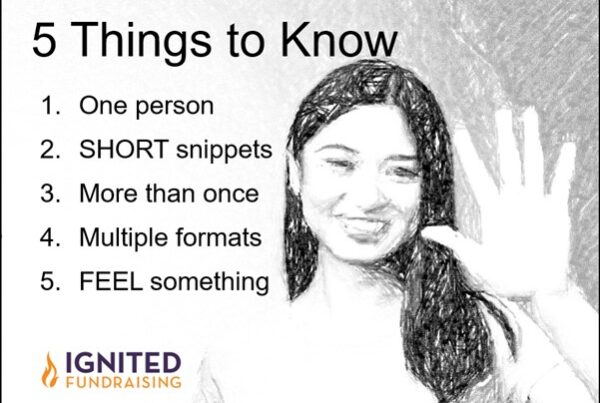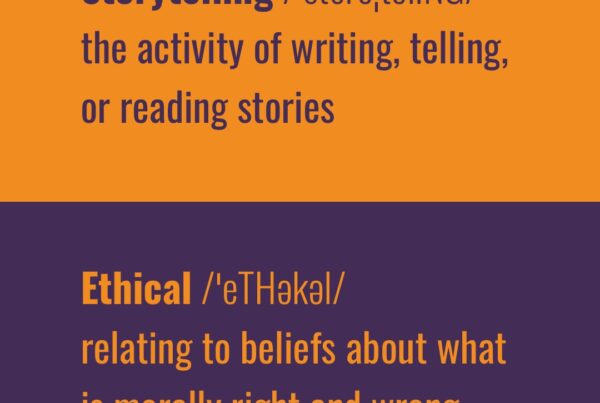Recently my colleague Carlo M. Cuesta had a post that has received lots of notice in Nonprofit Quarterly: Who Brands Your Nonprofit? Who Tells Its Story and How? In the post Carlo discusses the importance of telling your organization’s story by letting both internal staff and the public help craft the narrative.
He writes, “Through storytelling, when effectively guided, both internal and external publics can be given the opportunity to contribute to the creation of a meaningful narrative. A stronger bond is formed when our participants, donors, and community members, along with staff and volunteers, see themselves less as stakeholders and more as story shapers.
I totally agree, and would even take this a step further and state that we can hinder the message when it’s referred to as a “story.” Most staff and board members don’t quite know what to do when asked to tell the story that encapsulates the organization. It’s why, when I work with organizations, I often encourage them to identify what I call “mission moments”. These can be positive, not so positive, unfinished, inspirational, or moving moments that deeply convey the core values or work of the organization. It’s knowing how to find these and share these that gives insiders (donors, board, staff, volunteers) ease in helping share the “story” of the organization .
Once an organization gains some muscle in identifying mission moments, then, as Carlo wrote, “Harnessing the power of co-creation requires letting go.”
With the interconnections spurred on by technology and social media we no longer live in a 50s or 60s mentality when “marketing” messages were decided on by an agency or a committee. Embracing passionate voices — whether they come from inside or outside your nonprofit — sharing their feelings about a lock-out of staff, a set-back in government funding, or a one-time major gift can feel scary for the tightly controlled messengers. And can be exhilarating for organizations looking to build meaningful relationships.
Speaking of letting go and bringing in voices from the community to speak about your organization’s work, Carlo used an example that was near and dear to my heart. In his post he wrote about about Creative Care for Reaching Independence (CCRI), a group in Moorhead, MN that created a video for their walk-a-thon event that went viral. Here’s the video:
Carlo wrote, “…the impact of Creative Care’s “viral video” might seem like luck, they were able to successfully leverage the passion of their community to co-create a narrative that illustrates what they stand for. In short, they figured out how to pivot from telling a story to sharing a story.”
I love that phrasing: to pivot from “telling a story” to sharing a story. And that is exactly what the team at CCRI did. They truly let go of specific messages and outcomes and welcomed the community embrace of their mission and enthusiasm of the shared goal of getting Taylor Swift to visit their walk event. In fact, the viral video led to the donation of a “wedding” by a young woman whose wedding had been paid for but called off. That story, too, made national news.
The folks at CCRI are near and dear to me, a little insider note: I had just finished some work with CCRI when the viral video idea was born. Their team, led by some dynamic staff leadership, was, at one time timid about their power to engage and ignite their community. They started with the more formulaic creation of client stories and worked toward sharing their dreams and wishes through the eyes of parents, caregivers, and clients. And expanded to welcome messages shared by many in their supportive community. I’ve been proud to watch as they fell in love with being bold in their communication and in “letting go” of owning the outcome of how their agency story is shared.
It’s seeing organizations like CCRI take the fundamentals of storytelling and expanding them in new and exciting ways they couldn’t have even imagined that makes my work so rewarding.
As Carlo wrote, “a story is a gift, not a donor-acquisition strategy.”
I agree. The stories we share about our work, our clients, our organization are the gifts we give ourselves and our community. Whether it’s a simple happy-ending story or a complex, long, unfinished story, I’m a believer that creating a culture of regularly sharing mission moments frees people up to be effective messengers and worry less about “getting the story right.”





